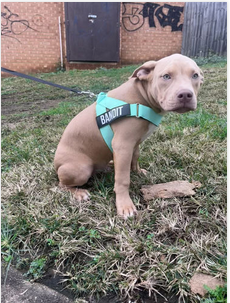Properly fitting a no pull harness is essential for your dog's safety and comfort. A well-fitted harness should prevent your pup from pulling or escaping, while also giving him room enough to maneuver around without feeling restricted. To make sure your no pull harness fits properly, it's very important to take the time to measure your dog accurately and follow the instructions given by the manufacturer. Here's a step-by-step guide on the best way to fit a number personalized dog harness.

Step 1 – Measure Your Dog Accurately
The most crucial thing when fitting a no pull harness gets the proper size for the pup. The simplest way to get this done is by measuring your pet with a flexible tape measure. Start with measuring the circumference of his chest just behind his front legs. Next, measure around his neck at its widest point, and finally, measure from the beds base of his neck down to where you would like the bottom of the harness to sit (usually just above their armpits). Make sure you take note of each one of these measurements, as they will be needed when shopping for an appropriate harness.
Step 2 – Choose The Right Harness
After you have all three measurements, you can use them to pick out an appropriately sized no pull harness according to the size chart given by the manufacturer. It's important that you don't try and guess which size would fit best; incorrect sizing could cause discomfort as well as injury if it fits too tightly or too loosely. You might want to think about buying two different sizes in case one doesn't fit correctly so you can return it if necessary.
Step 3 – Put On The Harness
Given that you have chosen the best size for your pup, it's time to hold the harness! Be sure that all straps are loosened before putting it on him to ensure that there won't be any tension on his body while he's wearing it. Place one arm through each side of the looped area of the harness and fasten all buckles as instructed before tightening them up slightly until snug against his body but not too tight - there should still be some slack in each buckle when pulled gently from his body with two fingers. Lastly, clip on any extra accessories like leash rings or reflectors as required before taking him out for a test run!

Conclusion: Fitting a no pull harness correctly is needed for ensuring your pup's safety and comfort while on walks or playing in open spaces. By taking accurate measurements and following manufacturers' instructions closely, you may make sure that the pooch includes a perfectly fitted no pull harness everytime! If done correctly, this can help prevent unwanted escape attempts while also reducing strain on their neck because of excessive tugging during walks or playtime activities - happy walking!
